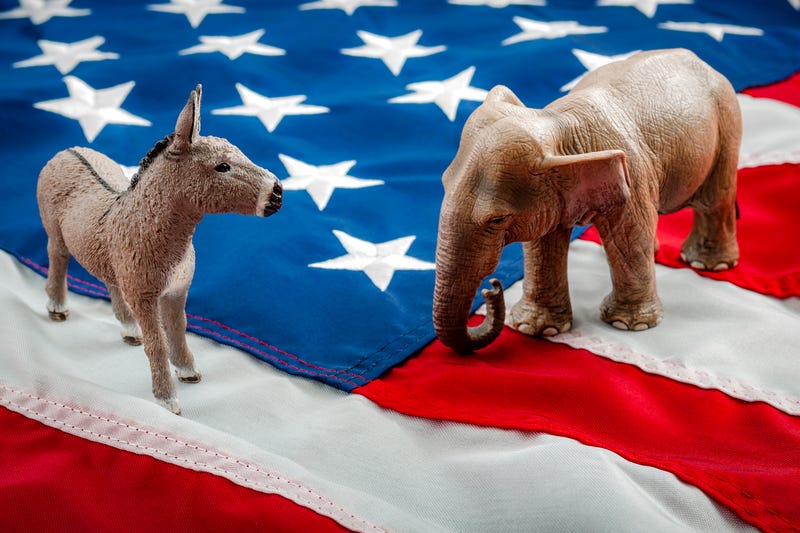
Tom Horner ran for Minnesota governor in 2010 as an independent candidate. Horner, who is a public affairs consultant and co-founder of Himle Horner, finished reasonably well in the Election with over 11% of the vote. The Election was won by Mark Dayton (D) over Tom Emmer (R) in what was a very close race.
Now, Horner is speaking out against Primaries including an op-ed in the Minneapolis Star Tribune.
Minnesota’s Primary is coming up August 9, and Horner says these Elections, which help choose the candidate running for individual parties, is “bad for America”.
Primary participation tends to be far lower than in a General Election and the lack of participation leads to a small group of people making a decision for a larger group of voters.
“It's a system created by Democrats and Republicans to serve Democrats and Republicans but it's not serving either very well,” Horner said to WCCO's Adam and Jordana. “More importantly, it's not serving voters.”
Horner goes on to say that the process attracts extreme members of each party to try and unseat incumbents instead of focusing on issues that actually serve the communities they represent.
It’s well-known that Minnesota has not elected a Republican to statewide office since Tim Pawlenty in 2006. Horner says primaries are at least partly to blame for the lack of candidates that can win a popular vote in Minnesota.
“But even more stunning to me is only two people in the last 50 years, the last half century, who have been endorsed by a Republican Convention have gone on to be elected governor,” Horner explained. “And part of the problem is that Republicans have made their convention endorsement sacrosanct. So you have a small group of intense partisans gathering in May at a convention to put forward candidates for another small group of intense partisans in August in the primary.”
Horner says it hasn’t been much better on the DFL side despite their streak of winning statewide races.
“The last two governors, Dayton and Walz, were elected in spite of not being endorsed by the conventions,” Horner says. “So they beat the system.”
There is a guarantee that anyone deciding to run as a Republican or Democrat automatically gets put on the Primary ballot. But Horner says the struggle to get diversity in Elections stems from the difficulty of running outside the two-party system. Those candidates are required to get signatures (2,000) over the course of two weeks in May. Horner said it is more difficult than it sounds, and the Primary system continues to favor the two main parties.
“At a time when almost every survey shows that a plurality of voters, they consider themselves to be independent,” Horner said. “They consider themselves to be aligned neither with the Democratic or the Republican Parties. But when the General Election comes, they get forced to vote that way because of the limited choices. A lot of that’s driven by the primary system.”
In many of Minnesota’s Congressional races, they are not competitive in the General Election. In Districts 3, 4, and 5, Democrats are almost sure to win. In Districts 6 and 7, Republicans are most likely to win in the General Election. That makes the Primary, essentially, the Election.
“Minnesota used to pride itself on avoiding that kind of extremism, on having candidates who were innovative, thoughtful, reflected mainstream conservative and liberal ideas,” Horner told WCCO. “But in a way that made sense, in a way that really drove policies forward. Well, now you have a group of extreme conservative Republicans challenging state legislative candidates at conventions in the primaries over in the fourth district. You have a reliable liberal vote in Betty McCullum, a two-decade incumbent, being challenged from the left. We're seeing attacks from the left and the right.”
Horner said he is curious how things will work in Alaska this Election cycle. They have gone to an open primary system where the top four finishers, regardless of party, will advance to a General Election. He said it is much more likely to create diverse candidates and opinions instead of the far left vs. far right most races across the country end up being. But even an open primary has issues according to Horner.
“Now, one of the problems, and you know we saw this in Minneapolis the first year of ranked choice voting, is that you tend to get a very crowded ballot. So there have to be some fixes,” Horner predicts. “I think you could go back to a petition system to get on the ballot to reflect some statewide support, not as onerous as Minnesota's requirements, but something that says I'm at least a credible candidate. But that open primary allows people to express different views, diverse candidates to get on the ballot, and most importantly, it gives voters real choices where they can make positive votes for a candidate.”
Horner says that fixing the Primary could lead to more actual votes for a candidate, instead of a situation where voters feel they’re voting against the other candidate.
And he has one more important message as the political season ramps up: “Whatever the primary laws might be, it's important to vote.”



